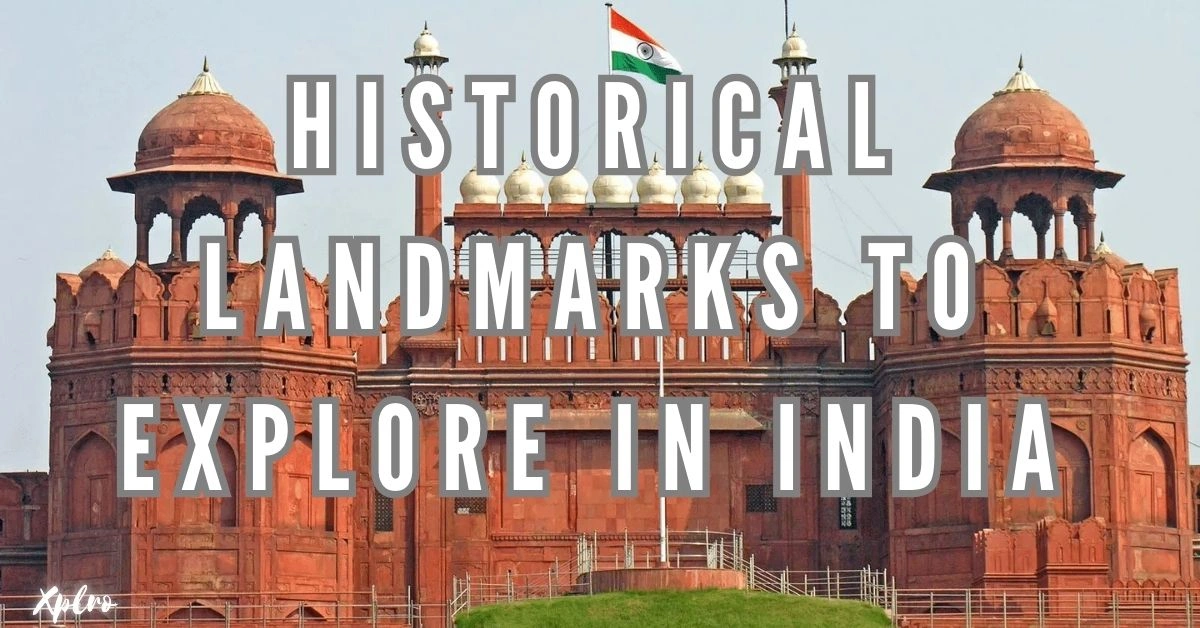Historical Landmarks to Explore in India, a land steeped in history, boasts some of the world’s most stunning and culturally important landmarks. From grand forts to sacred temples and ancient cities, these sites offer a window into India’s glorious past. If you’re planning a trip to this culturally rich country, here are the top 10 historical landmarks you shouldn’t miss:
1. Taj Mahal, Agra
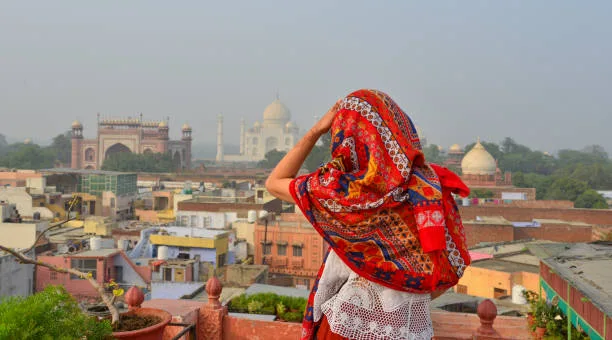
Location: Uttar Pradesh
History: Built in the 17th century by Emperor Shah Jahan as a memorial to his beloved wife Mumtaz Mahal.
Significance:
A stunning example of Mughal architecture, blending Persian, Islamic, and Indian styles.
- Key Features:
- White marble mausoleum
- Intricate inlay work of semi-precious stones
- Reflecting pool in the Yamuna River
- Expansive Mughal gardens
- Travel Tip: Visit early morning or during sunset to witness the changing colors of the monument.
2. Qutub Minar, Delhi
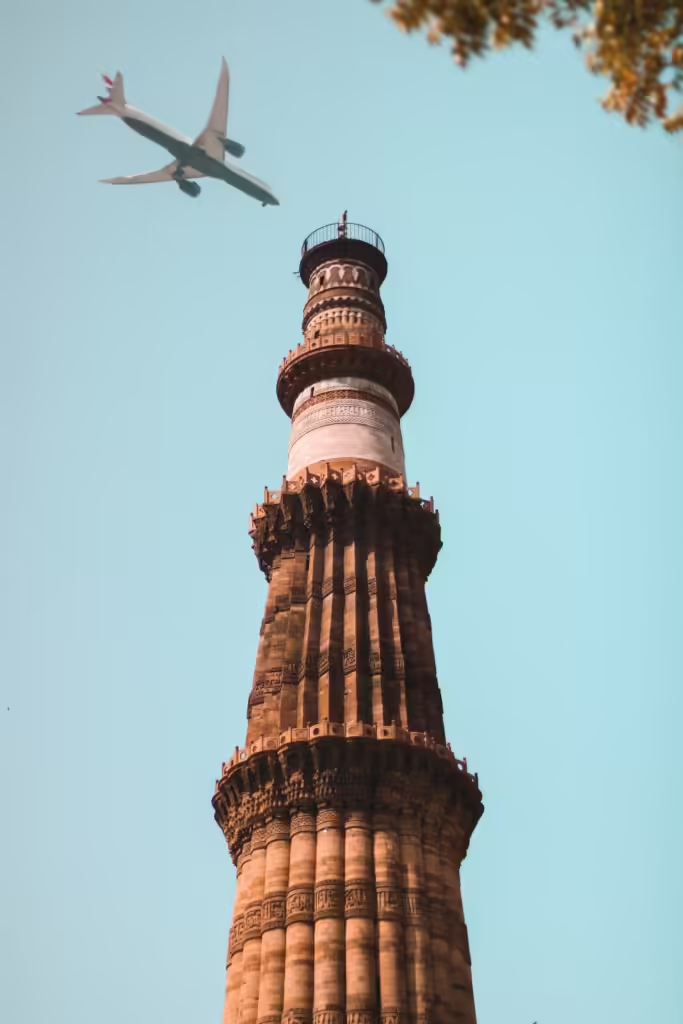
Location: Delhi
History: Constructed in the 12th century by Qutb-ud-din Aibak, a prominent figure in the early Delhi Sultanate.
Significance: A UNESCO World Heritage Site and a symbol of the beginning of Muslim rule in India.
- Key Features:
- World’s tallest brick minaret
- Intricate carvings and Arabic inscriptions
- The Iron Pillar, a marvel of ancient metallurgy
- Travel Tip: Visit during the evening to capture stunning photos against the setting sun.
3. Red Fort, Delhi
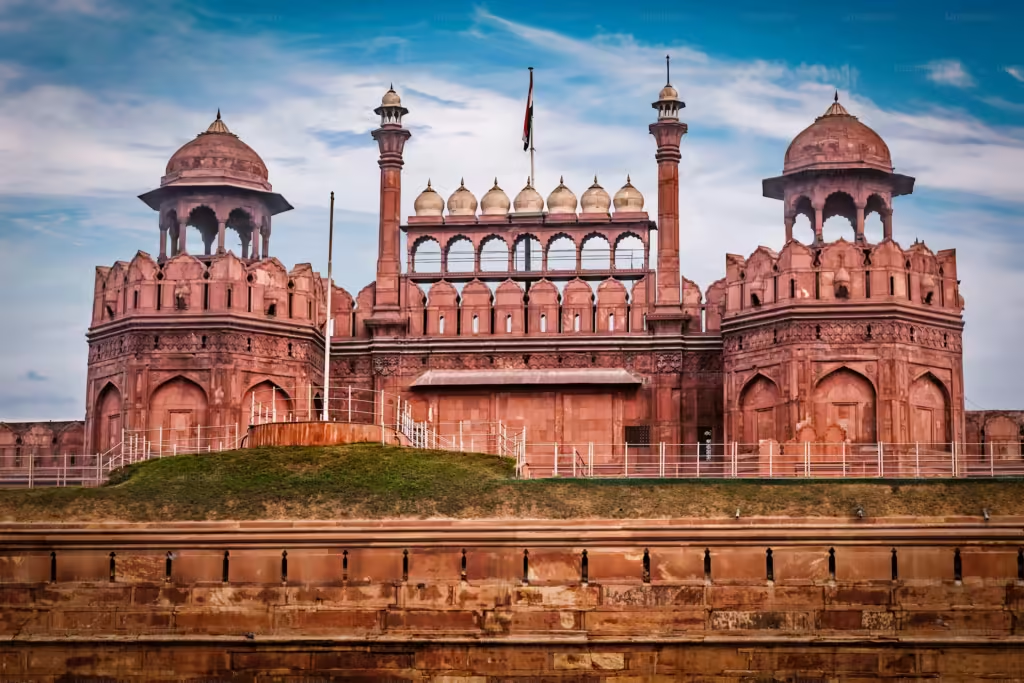
Location: Delhi
History: Constructed in the 17th century by Mughal Emperor Shah Jahan
Significance: A symbol of India’s rich history and the struggle for independence
- Key Features:
- Massive red sandstone walls
- Lahore Gate
- Diwan-i-Aam (Hall of Public Audience)
- Diwan-i-Khas (Hall of Private Audience)
- Moti Masjid (Pearl Mosque)
- Lush gardens
- Evening sound and light show
- Travel Tip: Arrive early to avoid crowds and explore the nearby Chandni Chowk market for a taste of old Delhi.
4. Hampi, Karnataka
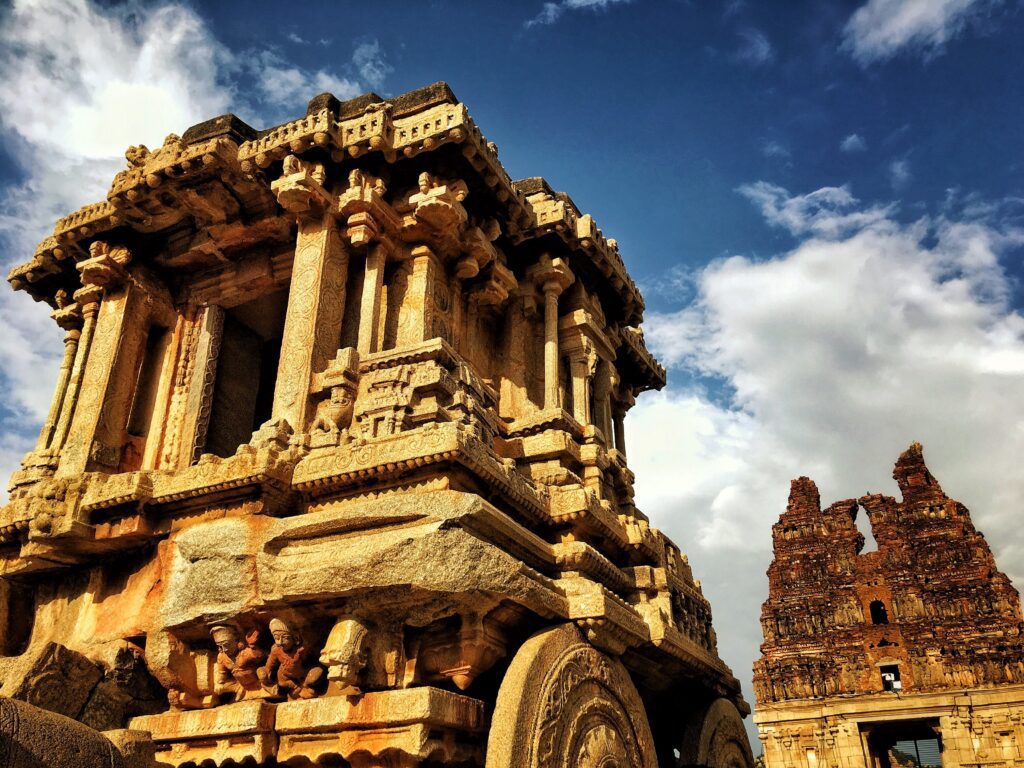
Location: Karnataka
History: Once the capital of the Vijayanagara Empire, a powerful Hindu kingdom.
Significance: A UNESCO World Heritage Site, renowned for its stunning ruins and architectural marvels.
Key Features:
- Virupaksha Temple
- Vittala Temple complex with its iconic stone chariot
- Monolithic statues of deities
- Rugged boulder landscape
Travel Tip: Rent a bicycle or scooter to explore the vast ruins at your own pace.
5. Amer Fort, Jaipur
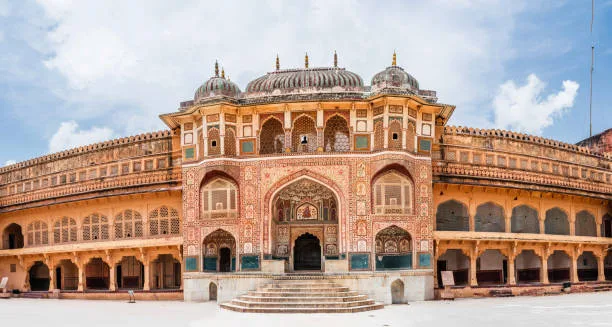
Location: Rajasthan
History: Built in the 16th century by Raja Man Singh I
Significance: A magnificent example of Hindu and Rajput architectural styles, overlooking Maota Lake.
Key Features:
- Sheesh Mahal (Mirror Palace)
- Diwan-i-Aam (Hall of Public Audience)
- Diwan-i-Khas (Hall of Private Audience)
- Elephant rides
- Evening light and sound show
Travel Tip: Savor traditional Rajasthani cuisine at nearby eateries.
6. Khajuraho Temples, Madhya Pradesh
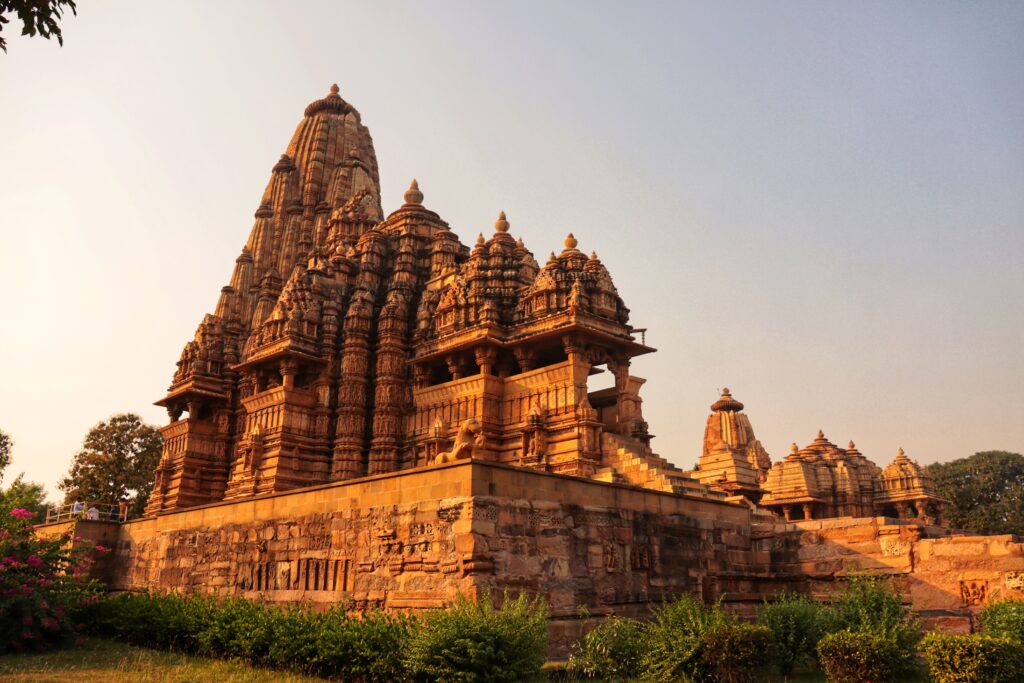
Location: Madhya Pradesh
History: Built by the Chandela dynasty between the 9th and 11th centuries.
Significance: A UNESCO World Heritage Site, famous for its erotic sculptures and intricate carvings.
Key Features:
- Kandariya Mahadev Temple
- Lakshmana Temple
- Intricate sculptures depicting deities, nymphs, and daily life
Travel Tip: Attend the annual Khajuraho Dance Festival to witness classical dance performances in a historic setting.
7. Fatehpur Sikri, Uttar Pradesh
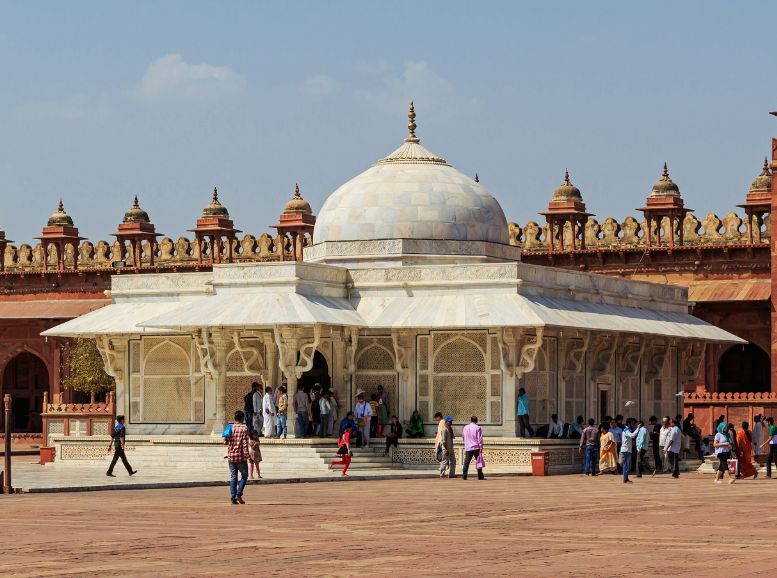
History: Built by Emperor Akbar in the late 16th century, serving as the Mughal capital for about 14 years.
Significance: A UNESCO World Heritage Site, showcasing the grandeur of the Mughal Empire.
- Key Features:
- Buland Darwaza (the world’s tallest gateway)
- Jama Masjid
- Panch Mahal
- Tomb of Salim Chishti
- Travel Tip: Wear comfortable footwear, as the site is vast and requires extensive walking.
8. Meenakshi Temple, Madurai
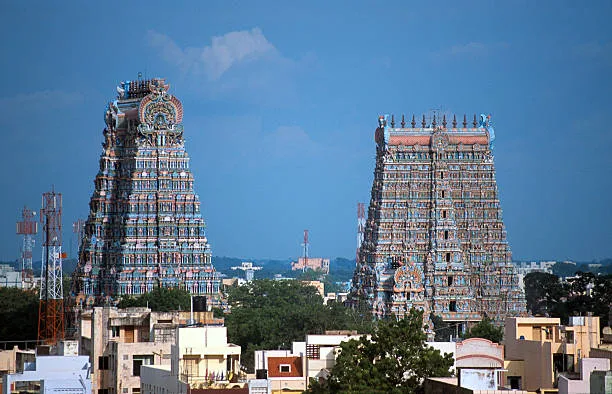
Location: Tamil Nadu
History: Built between the 12th and 17th centuries
Significance: A major Hindu temple dedicated to Goddess Meenakshi and Lord Sundareswarar, showcasing Dravidian architecture at its finest.
- Key Features:
- Towering gopurams with intricate sculptures
- Hall of a Thousand Pillars
- Sacred Golden Lotus Tank
- Travel Tip: Visit during the Meenakshi Tirukalyanam festival for a truly unforgettable experience.
9. Ellora and Ajanta Caves, Maharashtra
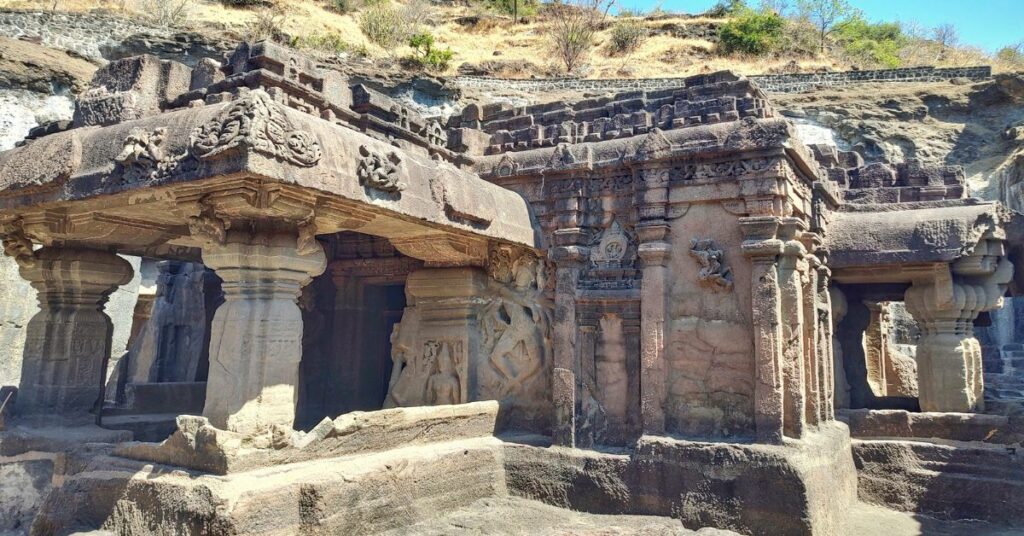
Location: Maharashtra
History: Ajanta Caves: 2nd century BC; Ellora Caves: 6th to 10th century AD
Significance: UNESCO World Heritage Sites, showcasing the artistic and architectural brilliance of ancient India.
Key Features:
- Ajanta Caves: Buddhist cave paintings and sculptures
- Ellora Caves: Buddhist, Hindu, and Jain cave temples, including the monolithic Kailasa Temple
Travel Tip: Wear a hat and sunscreen, as the site involves extensive outdoor exploration.
10. Gateway of India, Mumbai
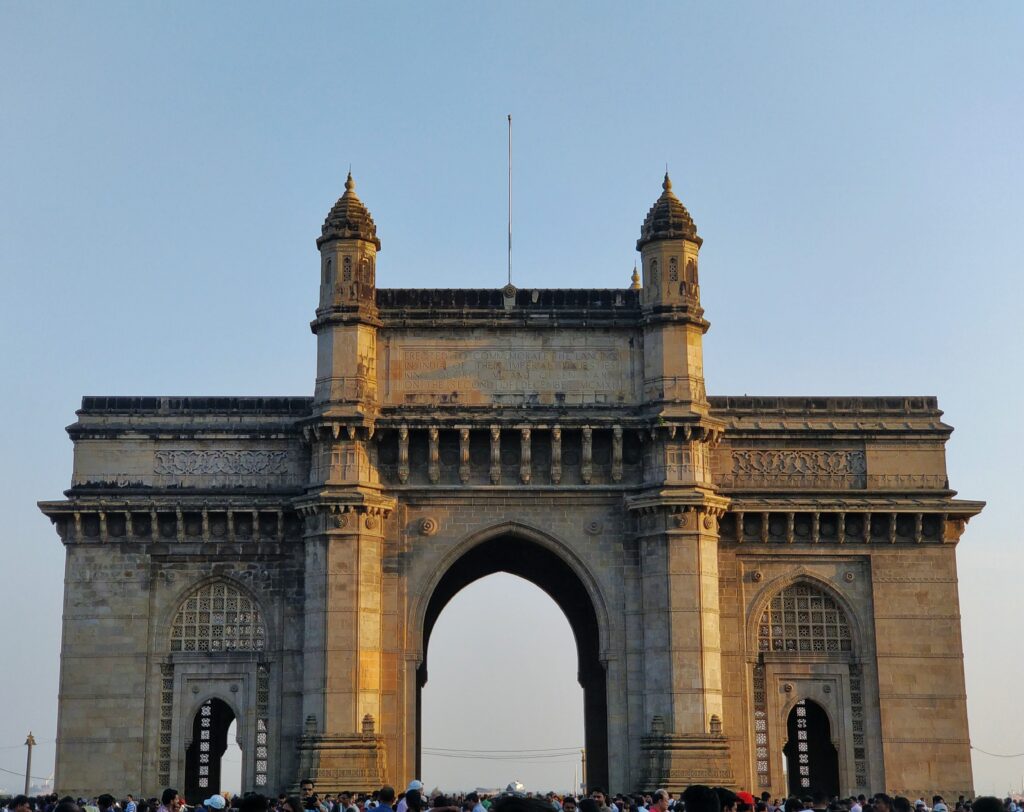
Location: Maharashtra
History: Built in 1924 to commemorate the visit of King George V and Queen Mary.
Significance: A symbol of the end of British rule in India, as the last British troops departed through this gateway in 1948.
Key Features:
- Indo-Saracenic architecture
- Stunning views of the Arabian Sea
Travel Tip: Take a ferry ride to the nearby Elephanta Caves for an extended historical adventure.
Conclusion – Historical Landmarks to Explore in India
Exploring India’s historical landmarks through a journey with Xplro.com offers a profound understanding of the country’s diverse cultural heritage and architectural brilliance. Each site, from the grandeur of a Mughal fort to the serenity of an ancient temple, unveils a story waiting to be discovered by curious travelers. From the breathtaking Taj Mahal, a monument of eternal love, to the towering Qutub Minar, a symbol of Islamic rule, India’s past unfolds like a treasure trove, never failing to amaze. So pack your bags, dust off your walking shoes, and let Xplro.com guide you on an unforgettable adventure through time!
FAQs
1. What is the ideal time to visit the Taj Mahal?
- The best time to visit the Taj Mahal is between October and March. The weather is cooler and more comfortable for sightseeing. Early morning or sunset visits offer stunning views of the monument as the light changes.
2. Is there an entry fee for Qutub Minar?
- Yes, there is an entry fee for Qutub Minar. As of the latest rates, Indian citizens pay ₹40, while foreign tourists pay ₹600. Entry is free for children under the age of 15.
3. Is there a dress code for visiting temples like the Meenakshi Temple?
- Yes, visitors are expected to dress conservatively at the Meenakshi Temple. Both men and women should have their shoulders and knees covered. Traditional attire, such as sarees or kurtas, is preferred.
4. How much time is needed to explore Hampi fully?
- Exploring Hampi thoroughly takes around 2-3 days. The ruins are spread across a large area, and there are numerous temples, monuments, and viewpoints to experience.
5. What are some nearby attractions to the Red Fort in Delhi?
- Close to the Red Fort, you can explore Jama Masjid, one of India’s largest mosques, and the bustling Chandni Chowk market. Raj Ghat, the memorial to Mahatma Gandhi, is also nearby and worth a visit.
6. Can I take photos inside Khajuraho Temples?
- Yes, photography is allowed within the Khajuraho Temple complex. However, photography inside the active sanctums may be restricted. If you wish to take professional photos, you might need a permit from the authorities.
7. Are guided tours available for Fatehpur Sikri?
- Absolutely, guided tours of Fatehpur Sikri are available and highly recommended. Guides provide insights into the history, architecture, and stories of Emperor Akbar’s reign, enhancing your visit.
8. What makes the Ellora and Ajanta Caves so special?
- The Ellora and Ajanta Caves are famous for their rock-cut architecture and intricate carvings. The Ajanta Caves feature ancient Buddhist paintings, while Ellora is celebrated for its Hindu, Buddhist, and Jain temples, including the impressive Kailasa Temple.
9. How crowded does the Gateway of India get?
- The Gateway of India is often busy, especially on weekends and holidays. For a quieter experience, plan your visit early in the morning or on weekdays.
10. Are there good places to stay near Amer Fort in Jaipur?
- Yes, there are plenty of accommodation options near Amer Fort, including luxury hotels, boutique stays, and budget guesthouses. Staying nearby also gives you easy access to other attractions in Jaipur, like the City Palace and Hawa Mahal.
11. What should I bring when visiting historical sites like Hampi and Ellora?
- It’s wise to carry essentials like water, a hat, sunscreen, and comfortable walking shoes. You’ll also want a camera for photos and a guidebook or a downloaded map to navigate the sites.
12. Do historical landmarks in India host any festivals or special events?
- Yes, several historical landmarks host cultural events. For instance, the Khajuraho Temples hold an annual dance festival in March, showcasing Indian classical dances. The Taj Mahal celebrates the Taj Mahotsav in February, featuring arts, crafts, and performances.




